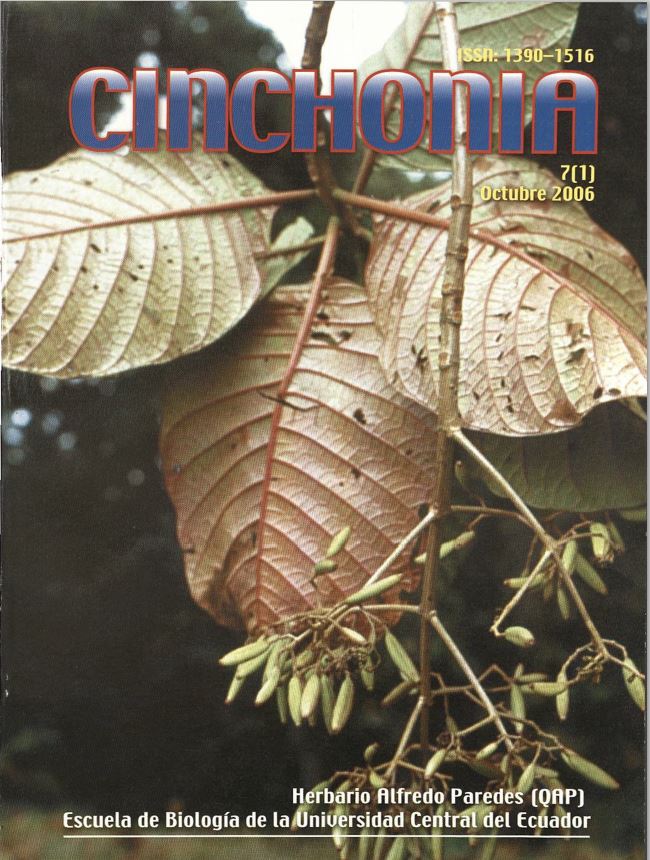REMANENTES DE BOSQUE ALTO ANDINO EN LA CUENCA DEL RÍO APAQUI, CARCHI - ECUADOR
Main Article Content
Abstract
In february and august 2004 we carried out a botanic research in Pisan (00°30.25’N - Cinchonia Vol. 7, # 1, 2006 29 77°48.7’W, 3.000 masl), La Delicia (00°36.19’N - 77°52.57’W, 3.180 masl) and Gruta de la Paz (00°29.53’N - 77°50.22W, 2.450 masl) in the Apaqui river basin, province of Carchi. In Pisan and La Delicia we established radial and linear models, respectively, of 50 x 4 m x 5 transects to recorc species with DBH > 2.5 cm. Random surveys were carried out in Gruta de la Paz. Collected specimens are kept in the Alfredo Paredes herbarium (QAP). We calculated Diversity (DI) and Similarity (SI) indices for all sites. In Pisan we found 234 individuáis of 46 species; the DI was 19.6 (cióse to mean diversity). The most common species were Anthurium scabrinerve, A. oxybellum, Palicourea flavescens, Chusquea lehmannii, Piper rugulosum and Weinmannia pinnata. In la Delicia we found 247 individuáis of 33 species, the DI was 10.39 (cióse to mean diversity). The most common species were Chusquea scandens, Grosvenoría rimbachii, Miconia bracteolata, Madeania rupestris, Gynoxys buxifolia and Diplostephium floribundum. Pisan and La Delicia shared 9 species, their SI was 0.22 (22%). In Gruta de la Paz we recorded 86 especies; the most common were Tillandsia lajensis, Phoradendron parietarioides, Elleanthus sodiroi, Epidendrum jamiesonis, Clinopodium fasciculatum and Niphidium longifolium. Despite the apparent geographic similarity, the Apaqui river basin ineludes forest remnants with different conservation status and vegetation composition. Anthropogenic factors are related to deforestation. The findings of mamut fossils Stegomastodon waringi in the vicinities of the Bolívar settlement are noteworthy.

